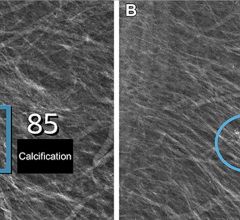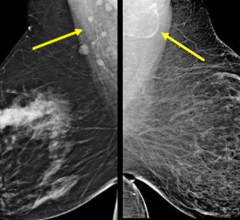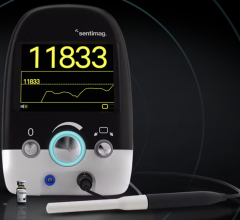Health care advocates have long encouraged physicians to switch to computerized medical records, saying they could improve patient care and increase efficiency. Doctors, however, have been more concerned about the high price tag — often more than $20,000 per physician for software, hardware and Internet connections — as well as having to maintain a computer network. Surveys estimate less than 20 percent of doctors have fully automated their offices.
"They're saying, 'I'm shelling out the money and everybody else is getting the benefits,'" said Tom Leary, director of federal affairs for industry group Healthcare Information and Management Systems Society.
But federal officials last month paved the way for hospitals to come to the rescue, allowing them to donate medical record systems to physician practices to blunt some of the financial bite.
In addition, those inside the industry recently agreed on technology standards that allow software from different companies to share data, taking some of the fear out of the purchasing decision.
Those moves are apparently loosening purse strings as medical software makers say they've seen a surge in new interest and new customers and predict this may be the spark they needed to pull the $1.5 billion electronic health records industry into the medical mainstream.
"It's been a month since the (new regulations) were announced and the increase in engagement has been immediate," said Sunny Sanyal, group president for clinical solutions at San Francisco-based McKesson Provider Technologies, which serves about a third of the nation's hospitals. "Physicians weren't ready to provide a big investment. The fact a hospital can now provide it for them completely changes the picture."
Added Rick Heise, an executive with Kansas City, Mo.-based software provider Cerner Corp., "It's created a huge amount of excitement so there's an opportunity for a lot of money to go around."
Electronic medical records have slowly gained acceptance in the health care industry, especially after President Bush in 2004 said he wanted all Americans to have an electronic patient record by 2014. Proponents, who envision a nationwide online database of medical information, say the records can speed up medical decisions, avoid errors and save lives.
Such information would be protected by federal privacy laws covering medical records, and supporters say secure networks would move information between health care providers bound by those laws.
Annual sales of records software are expected to more than triple to $4.9 billion by 2010, said Jewson Enterprises, an Austin, Texas-based research firm.
But while hospitals, with their deeper pockets, have steadily evolved to electronic medical records (EMRs), doctors' groups, constrained by declining Medicaid payments and a smaller pool of capital, have proven slower to adapt.
Hospitals weren't allowed to help, blocked by federal laws preventing physicians from referring Medicare patients to businesses in which they have a financial relationship or accepting compensation from a health care provider that could be viewed as an incentive to refer patients.
On Oct. 6, however, federal officials established exceptions to those laws that would cover medical record system donations, albeit with a host of conditions. For example, computer systems that are donated must be able to talk and interact with other health care computer systems around the country — a protection against hospitals using their donations to deter competition.
Doctors still must pay at least 15 percent of the system's cost and donations are limited to software or such things as maintenance costs or Internet fees. Donations of hardware, other types of software or personnel to run the systems are not allowed.
James Kumpel, a health care analyst with Friedman, Billings, Ramsey & Co., said he expected it will take several quarters of working through the legal questions and mapping out hospital-physician partnerships before the market sees a significant increase in sales, but they will come.
"Bush said he had a 10-year plan for (records). This is a good first step," Kumpel said. "It's all gravy because it hastens purchasing decisions and broadens the addressable market for them."
For example, Cerner has started to put more sales focus on physician offices, rather than just hospitals, leading the company to sign up more small-scale customers in the company's third quarter than in all of 2005, said Reise, director of Cerner PowerWorks, whose division now serves around 3,000 non-hospital clients.
He added that hospitals are also looking at records networks as an edge in the fight to attract high-quality physicians.
"They weren't able to pay them" before, he said. "Now that this relief has played out and been communicated by (federal officials) almost every hospital that is in a competitive situation is scrambling to build a (physician office records) strategy."
Michael Raymer, vice president and general manager for global product strategy at GE Healthcare, said his company has "already seen an uptick in unit sales this quarter that we attribute directly" to the rule changes.
For example, the new rules allowed one of his customers, Valley Baptist Health System in Harlingen, Texas, to speed up its plans to link hundreds of area physicians to its medical records network. Hospital officials said the changes let them offer larger subsidies for doctors wanting to subscribe to the network, rather than forcing them to buy the software themselves.
"This is what I'd best describe is a rural area," said Jim Barbaglia, chief information officer for the 840-bed health system near the Mexico border. "We have a lot of physicians who are solo practitioners. Making them pull out $25,000-$30,000 would have been cost-prohibitive."


 July 29, 2024
July 29, 2024 








